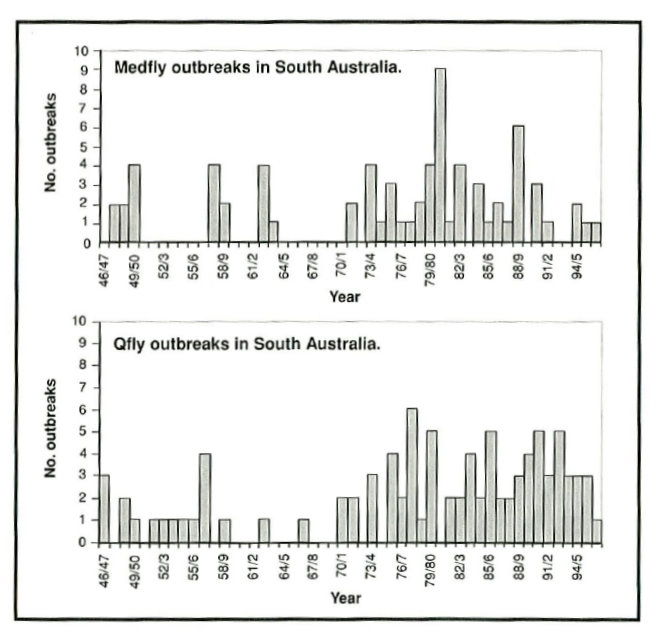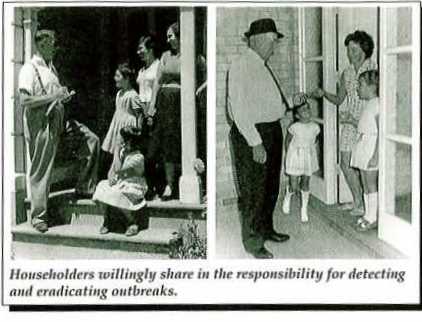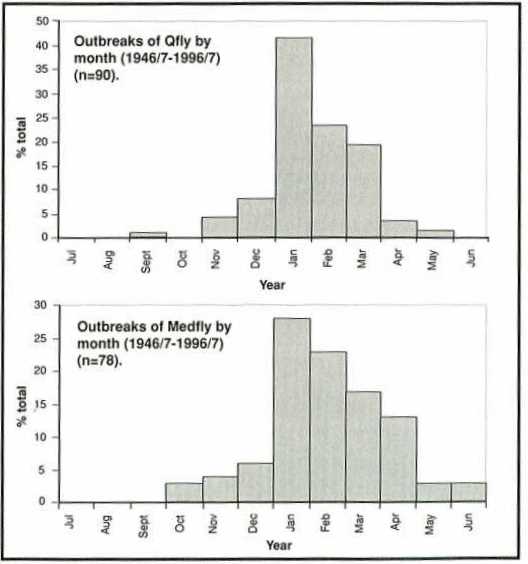1947–1997
In the 50 years since the 1946/7 outbreak, a total of 162 outbreaks have been treated, 142 of which were in the Adelaide metropolitan area. All except one occurrence of Dacus aequalis (identified from larvae) at Swan Reach were Qfly or Medfly.

The origin of all Medfly introductions is likely to be Western Australia, as that state has the only established populations of Medfly during the past 50 years. Med fly outbreaks have occurred in a number of locations in Adelaide during the past 50 years, but have also occurred in Port Augusta, Port Pirie, Port Lincoln, Whyalla, Ceduna, Orrorroo and Victor Harbor. Within Adelaide, there is no pattern of outbreaks in one area. These observations are consistent with random introductions of infested fruit, which are detected and eradicated.

Qfly outbreaks mainly occur in Adelaide, with one outbreak recorded at Loxton North and one at Victor Harbour. As with Medfly, there is no pattern of Qfly outbreaks in particular areas. This is consistent with the idea that the outbreaks arc the result of random introductions of infested fruit.
What is an outbreak?
An outbreak is declared if one or more tephretid larvae are found in fruit in the field, or if a female fly with eggs is found in a trap, or if two Medfly males or three Qfly males are caught within 14 days of each other within a 200m radius. This definition has changed a number of times in the past 50 years to reflect increasing knowledge of the ecology of fruit flies.
The changes in number of outbreaks over the years can be attributed to several factors, including favourable weather interstate for both Qfly and Medfly (more infested fruit being introduced during favourable seasons), the efficiency of border roadblocks and the efficiency of both the detection and eradication programs.
The size of an outbreak in recent years has been markedly reduced as the result of an expanded and more efficient method of detecting outbreaks by trapping adult flies. Of equal importance has been the cooperation of householders in reporting suspect larvae. Early detection by either the trapping of flies or reports of larvae by householders ensures prompt eradication procedures before the population expands.


